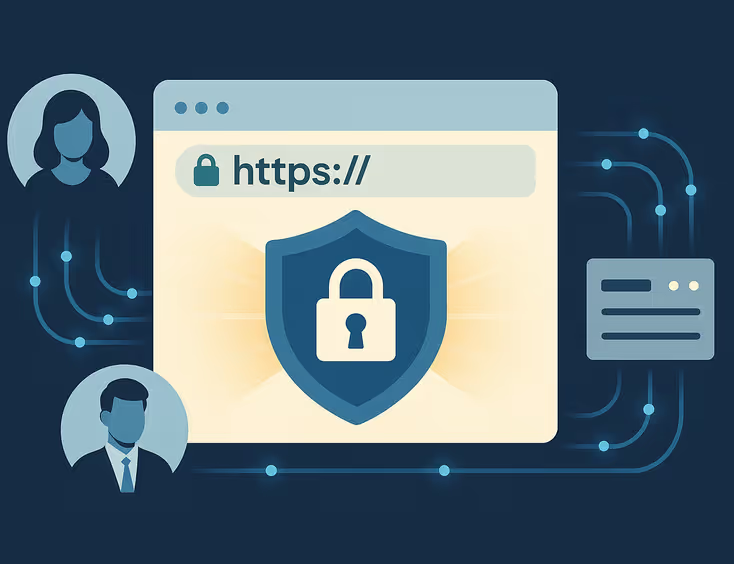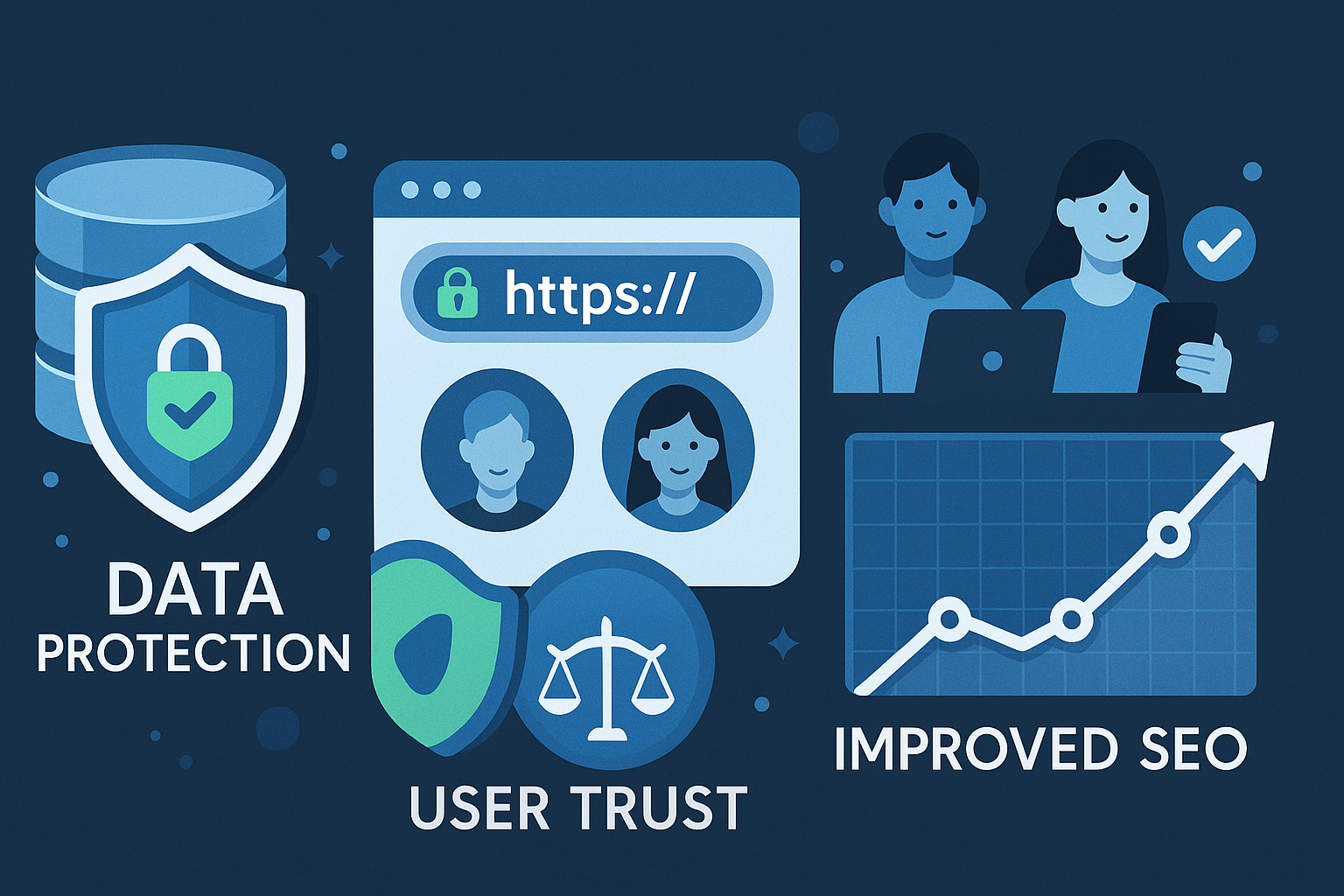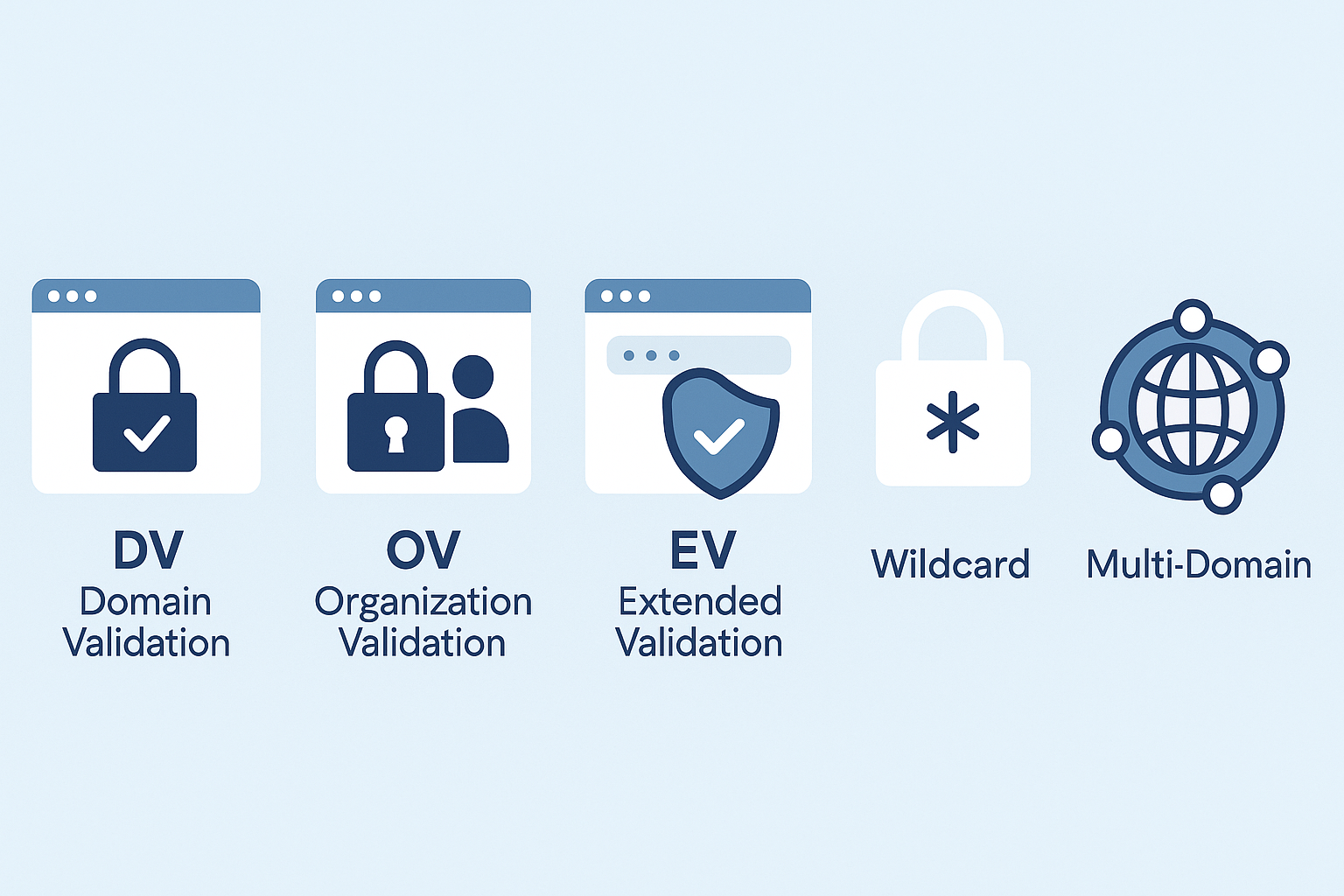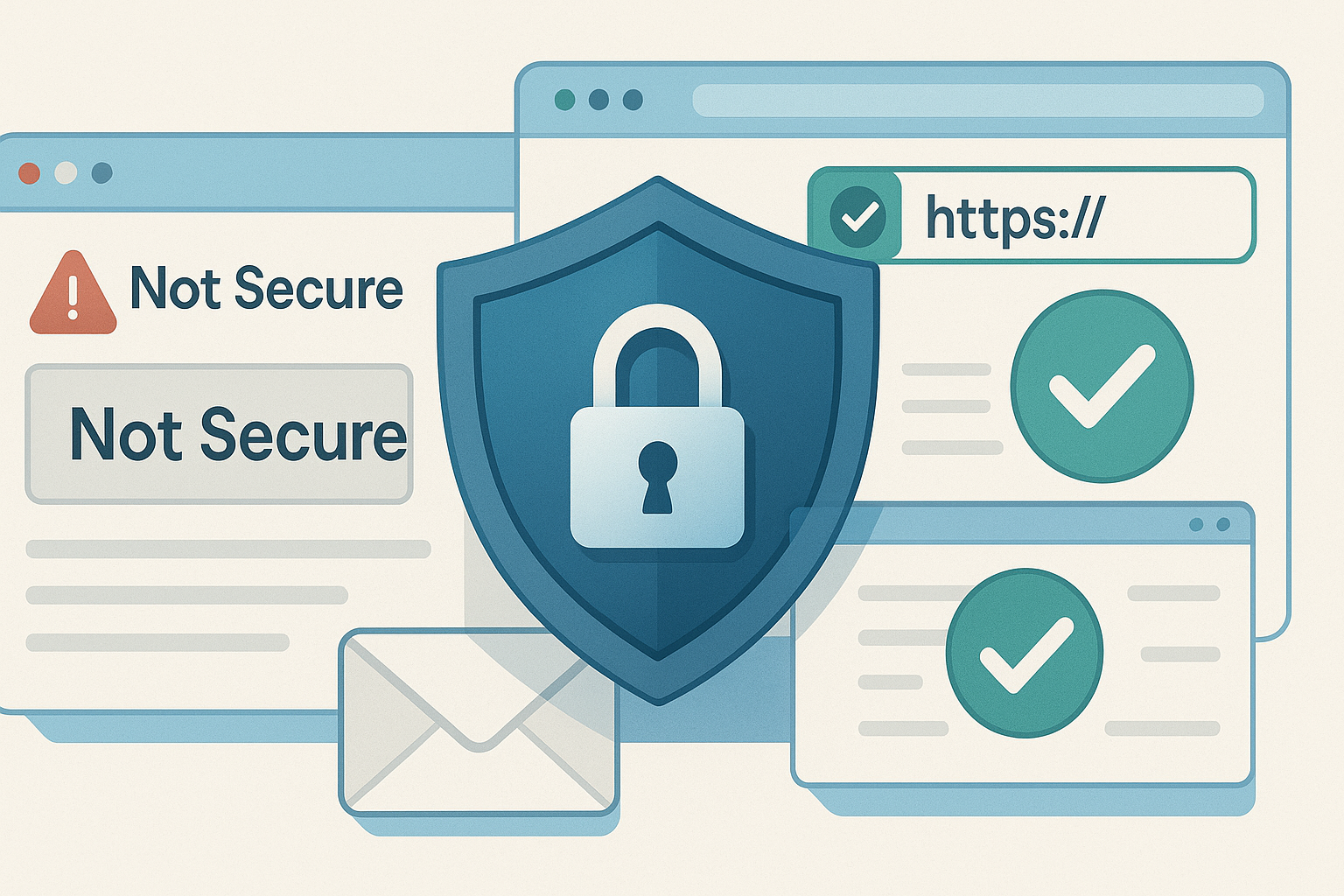
What is an SSL Certificate?

Introduction to SSL Certificates
An SSL certificate is a critical security technology that ensures the confidentiality and integrity of data exchanged between a user’s web browser and a website. SSL stands for Secure Sockets Layer, a cryptographic protocol designed to create a secure, encrypted link so that any data transmitted remains private and protected from eavesdroppers or cybercriminals.
In today’s digital world, where sensitive information such as personal details, payment data, and login credentials are constantly transmitted online, SSL certificates play an essential role in safeguarding both website owners and their users. They help establish trust, authenticate website identities, and protect data against interception or tampering.
How Does an SSL Certificate Work?
An SSL certificate works by enabling encryption of the data transferred between a user's browser and the web server hosting the website. Here’s a breakdown of how SSL operates:
- Establishing a Secure Connection:
When a user navigates to a website secured with SSL (indicated byhttps://), their browser first requests the website’s SSL certificate to verify its authenticity. - Authentication and Validation:
The browser checks if the SSL certificate is valid, issued by a trusted Certificate Authority (CA), and that it matches the domain. If everything checks out, the browser and the server engage in a cryptographic “handshake.” - Encryption of Data:
During this handshake, a session key is generated. This key is used to encrypt all data transmitted between the browser and the server for the duration of the session, making it unreadable to unauthorized parties. - Ongoing Protection:
With the SSL certificate in place, all interactions—from browsing to entering payment details—are secured through strong encryption.
Visual Signs of SSL Security
Websites protected by SSL certificates display certain indicators that users can look for:
- Padlock Icon: Most browsers show a padlock symbol in the address bar, signifying a secure connection.
- HTTPS Prefix: The website URL will begin with
https://rather than the insecurehttp://. - Certificate Details: Users can click on the padlock icon to view information about the certificate, such as the issuing Certificate Authority and the domain it’s issued to.

Why is an SSL Certificate Important?
SSL certificates provide several indispensable benefits for website owners and visitors alike:
1. Data Protection
The most fundamental function of an SSL certificate is to encrypt information sent between users and websites. This prevents hackers from intercepting or tampering with sensitive data, such as credit card numbers, login credentials, or personal information.
2. Authentication and Trust
SSL certificates not only encrypt data but also serve as digital credentials that verify a website’s legitimacy. This authentication process assures users that they are interacting with a genuine and trusted website, not a malicious impostor.
3. Enhanced User Trust
When visitors see visible trust indicators like the padlock or https://, they are far more likely to trust the site with their personal information. For e-commerce or any website collecting user data, this trust is critical.
4. Better Search Engine Ranking
Search engines such as Google favor secure websites. Sites using HTTPS with a valid SSL certificate may benefit from improved rankings, making SSL vital for SEO performance.
5. Compliance with Regulations
Many data protection regulations, including PCI DSS for online payments and the GDPR in Europe, require websites to use SSL encryption to protect user data. Without SSL, businesses risk legal and financial penalties.
What Information Does an SSL Certificate Contain?
An SSL certificate contains several key pieces of information designed to establish the identity and authenticity of a website. These typically include:
- Domain Name: The specific domain or subdomains the certificate covers.
- Certificate Holder’s Name/Organization: The legal entity or individual who owns the certificate.
- Certificate Authority (CA): The trusted organization that issued and validated the certificate.
- Certificate Validity Period: The issue and expiration dates of the certificate.
- Public Key: A cryptographic key used for encrypting data during the handshake process.
- Digital Signature: A cryptographic assurance from the CA, verifying the certificate’s authenticity.

Types of SSL Certificates
There are several different types of SSL certificates, each designed for specific use cases and levels of validation. The main types include:
1. Domain Validated (DV) SSL Certificates
- Purpose: Designed for basic encryption and validation.
- Validation Level: Only the right to use the domain is verified, usually through email or DNS.
- Ideal For: Small websites, blogs, and personal pages that don’t require extensive authentication.
2. Organization Validated (OV) SSL Certificates
- Purpose: Provide a higher level of trust by authenticating both domain ownership and organization details.
- Validation Level: The CA checks the organization’s legal existence and domain rights.
- Ideal For: Business and public-facing websites that collect user information.
3. Extended Validation (EV) SSL Certificates
- Purpose: Offer the highest level of validation and trust.
- Validation Level: Rigorous vetting of the business, including legal, physical, and operational existence.
- Visual Indicators: Some browsers display the organization name in the address bar.
- Ideal For: Large enterprises, financial institutions, and e-commerce sites where user trust is paramount.
4. Wildcard SSL Certificates
- Purpose: Secure a domain and all its subdomains with a single certificate.
- Use Case: For example, a wildcard certificate for
*.example.comcoverswww.example.com,blog.example.com, etc.
5. Multi-Domain (SAN) SSL Certificates
- Purpose: Secure multiple domains and subdomains within a single certificate.
- Use Case: Useful for businesses with several websites, such as
example.com,example.net, andshop.example.com.
How to Get an SSL Certificate
Obtaining an SSL certificate involves a straightforward but essential process:
1. Select the Appropriate SSL Certificate
Choose the type of SSL certificate that matches your website’s needs—considering the number of domains/subdomains and the level of validation required.
2. Generate a Certificate Signing Request (CSR)
Create a CSR on your web server. This encrypted file contains information about your domain and organization, which is needed by the Certificate Authority.
3. Submit the CSR and Complete Validation
Submit the CSR to your chosen Certificate Authority. The CA will then verify your domain ownership and, depending on the certificate type, your organization’s identity.
4. Receive and Install the Certificate
After successful validation, you’ll receive the SSL certificate file. Install this certificate on your web server. Most hosting providers and web platforms offer simple installation guides.
5. Test and Maintain
Check that your SSL certificate is installed correctly by using online tools or browser checks. Renew your certificate before it expires to maintain uninterrupted security.

SSL Certificates and Website Security
Why You Should Never Ignore SSL
Failing to secure your website with SSL exposes both your business and users to significant risks:
- Data Theft: Unencrypted data can be intercepted by malicious actors.
- Loss of Trust: Modern browsers may warn users that your site is “Not Secure,” driving away visitors.
- Regulatory Fines: Operating without proper encryption could result in penalties for non-compliance.
Ongoing Security Best Practices
While SSL certificates are foundational, website security requires ongoing diligence:
- Regularly update software and plugins.
- Use strong, unique passwords for your administrative accounts.
- Perform routine security audits and vulnerability scans.
- Educate your team about cybersecurity threats.
Frequently Asked Questions About SSL Certificates
What happens if my SSL certificate expires?
If your SSL certificate expires, your website will revert to an unsecured state. Browsers will warn users that your site is “Not Secure,” and encrypted data transmission will stop. Renew certificates well before expiration to avoid interruptions.
Do all websites need SSL certificates?
Yes. Even if your site doesn’t handle sensitive transactions, SSL is now a standard security best practice. It protects user privacy, builds trust, and is favored by search engines.
Are SSL and TLS the same thing?
SSL (Secure Sockets Layer) and TLS (Transport Layer Security) are both cryptographic protocols for securing data. TLS is the modern, more secure version of SSL. Today, when people say “SSL certificate,” they usually refer to certificates that enable TLS.
Can I get a free SSL certificate?
Yes. Some Certificate Authorities, such as Let’s Encrypt, provide free SSL certificates. However, paid certificates from reputable CAs like DigiCert typically offer more robust validation, warranty, and support.
Conclusion: The Essential Role of SSL Certificates
SSL certificates are the foundation of secure, trustworthy online experiences. They protect data, verify website identities, improve user confidence, and help organizations comply with regulations. Whether you run a personal blog or a large e-commerce platform, implementing SSL is not optional—it is a fundamental requirement for every modern website.
If you have any questions about choosing or installing an SSL certificate, consult a trusted Certificate Authority or your hosting provider for expert guidance.





